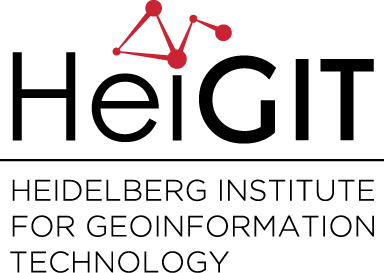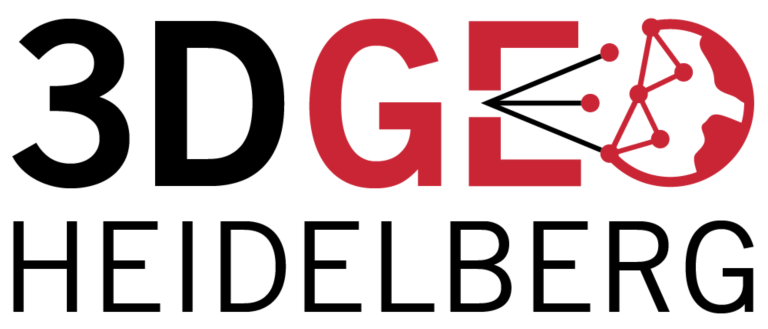Tag: Lidar
-
IWR Colloquium on Robust Geometry Extraction in Large Spatial Point Clouds (Prof. Roderik Lindenbergh)
Everyone interested is cordially invited to the talk of Prof. Roderik Lindenbergh (TU Delft, NL) on Robust geometry extraction in large spatial point clouds in the frame of the IWR Colloquium at the Interdisciplinary Center for Scientific Computing. When: Wednesday, 27th June 2018, 14:15 Where: Conference Room (5th Floor), Mathematikon, INF 205 Before the talk,…
-
Colloquium on monitoring of rockfalls and post-seismic landslide patterns
We cordially invite everybody interested to our next open GIScience colloquium talk The speaker is Dr. Jack Williams Department of Geography, Durham University When: Monday 28.05.2018, 2:15 pm Where: INF 348, room 015 (Institute of Geography, Heidelberg University) Near-continuous monitoring of rockfalls and insights into post-seismic landslide patterns This talk focuses on two strands of research that…
-
Information Extraction from LiDAR Intensity Data and Multispectral LiDAR Technology
LiDAR is a consolidated technology for topographic mapping and 3D reconstruction, which is implemented in several platforms On the other hand, the exploitation of the geometric information has been coupled by the use of laser intensity, which may provide additional data for multiple purposes. This option has been emphasized by the availability of sensors working…
-
4D-LiDAR Snow Cover Monitoring at the Highest Summit of Germany
The all-new terrestrial laser scanner (TLS) of the 3DGeo group (Prof. Bernhard Höfle) has been set up at the Environmental Research Station Schneefernerhaus over one week (mid of April 2018) to capture a unique highly temporal time series of the melting and degrading snow cover during the April’s week with the warmest daily maximum temperatures…
-
Third Workshop on “3D Field Methods in Geosciences”
The third workshop on 3D methods in geological applications was jointly organized by the University of Göttingen, the Geological Service of North Rhine-Westphalia (NRW, German federal state), and the 3D Geo Research Group at Heidelberg University. The workshop is an event of the initiative “3D Field Methods in Geosciences”, which provides a platform to connect…
-
3D micro-mapping: Towards assessing the quality of crowdsourcing to support 3D point cloud analysis
Crowdsourcing has been widely applied to extract information from 2D geodata sources such as satellite imagery. In this new study published in the ISPRS Journal of Photogrammetry and Remote Sensing we apply this technique to the growing field of 3D point cloud analysis. This work has been conducted in our 3D-MAPP Project which was funded…
-
Trace element partitioning in fluvial tufa reveals variable portions of biologically influenced calcite precipitation
Freshwater tufas are widespread phenomena in karst environments denoting important terrestrial paleo-environmental and paleoclimate archives. Additionally, many tufa sites are UNESCO world natural heritages, which emphasizes their societal importance (e.g. Jiuzhaigou, China; Plitvice, Croatia) and the demand for comprehensive conservation and monitoring strategies. Formation of tufas is controlled by numerous factors. The latest publication –…
-
Vorbesprechung GP/Übung: Physiogeographische Geodatenerfassung im Hochgebirge (Ötztal)
Die Veranstaltung “Physiogeographische Geodatenerfassung im Hochgebirge (Ötztal)” wird im Sommersemester 2018 zwischen 29.07.2018 und 04.08.2018 in Obergurgl, Tirol, Österreich, durchgeführt. Die verpflichtende Vorbesprechung findet am Fr. 02.02.2018, 11:30., R132/INF348, statt. Die Veranstaltung ist eine Zusammenarbeit zwischen Geoinformatik (Prof. Höfle, K. Anders) und Physiogeographie (Dr. Hecht) und bietet die einzigartige Möglichkeit verschiedenste Methoden der Geodatenerfassung an…
-
Today Two free GIS Events @Heidelberg
Today you have the choice to select between two interesting GIS related events @Heidelberg with contributions by GIScience Group Heidelberg University: Geobasierte Modelle. 14. Modellierungstag Rhein-Neckar am 1. Februar 2018 (in German, @Mathematikon HD, 14.00-18.00) European Citizen Science Association Webinar on #citizenscience for monitoring urban landscape dynamics (in English, Online-Webinar, 16:30-17:30) It’s your choice. Enjoy!…
-
Digital Geoarchaeology: New Techniques for Interdisciplinary Human-Environmental Research
Digital Geoarchaeology can be regarded as an intersection of disciplines that contributes to the consolidation of different academic perspectives. It represents a novel approach in terms of computer scientific methods combined with geoscientific know-how and archaeological expertise to multi-methodically investigate past human-environmental relationships (Siart et al. 2018). In the new textbook “Digital Geoarchaeology” by Springer,…
-
Cover Story of ISPRS International Journal of Geo-Information
Not undercover but on the cover: We were selected as cover story of the ISPRS International Journal of Geo-Information, Volume 6, Issue 11. In our research on “Historic Low Wall Detection via Topographic Parameter Images Derived from Fine-Resolution DEM“, we apply rapid landscape line detection to extract historic vegetable garden walls based on topographic information…
-
Mobile low-cost 3D camera maize crop height measurements under field conditions
Maps of the spatial distribution of crop heights can strongly support agriculture in terms of efficiency and yield optimization. Recently published results of experiments of the 3D Spatial Data Processing research group describe an approach to easily extend regular agricultural machines with low-cost sensors for capturing crop heights while the machine is in the field.…


